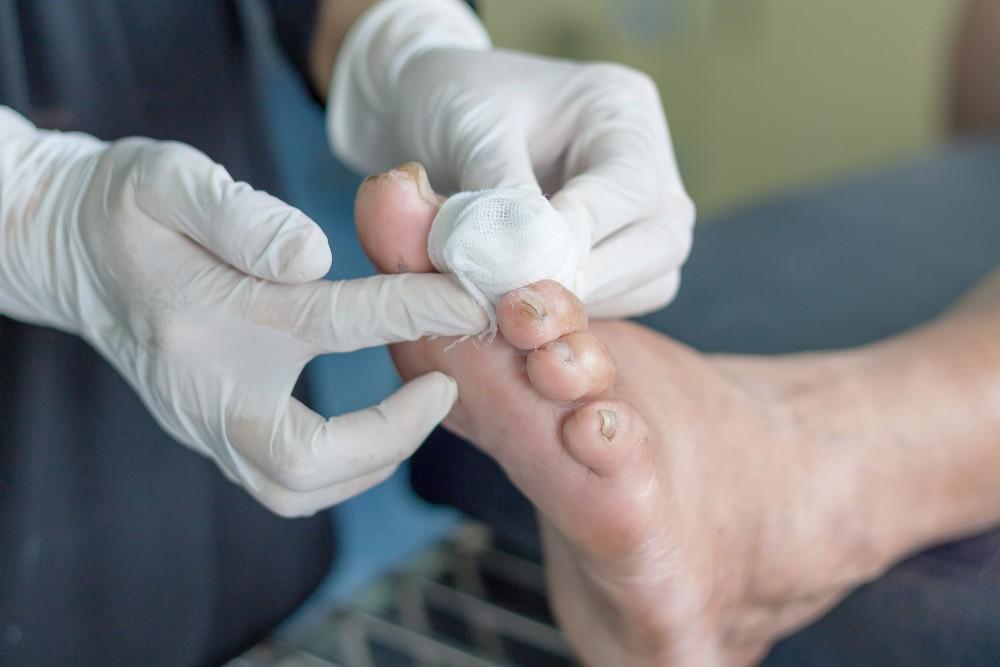With all the changes you’re experiencing as you learn to manage diabetes, you may be tempted to slide the instructions about foot care to the bottom of the pile. Our specialist explains why that’s the last thing you should do.
Diabetes is a complex disease that often changes your entire perspective about the foods you eat, the exercise you get, and what it means to live healthily. It should also change the way you view your feet.
Dr. Manjulatha Badam of Vayu Advanced Wound Clinic & Hyperbarics in San Antonio, Texas, is a board-certified internist and wound care specialist who’s fellowship-trained in hyperbaric medicine. She’s also an expert in diabetic foot care.
Dr. Badam explains how diabetes affects your feet and shares five signs that indicate it’s time to schedule an evaluation with a specialist.
Why is diabetic foot care so important?
Many of the complications associated with diabetes, especially poorly controlled diabetes, can have a significant impact on your nerve function, circulatory health, and ability to fight infection.
Left untreated, these issues can cause chronic and disabling pain, decreased mobility, and even limb amputation.
Common diabetic foot problems include:
Peripheral neuropathy
Diabetic nerve damage (neuropathy) linked to elevated blood sugar levels interferes with your ability to feel pain from a blister, puncture, scrape, or other injury. It also decreases your sensitivity to hot or cold temperatures.
For these reasons, a small cut or abrasion may become infected before you’re even aware it exists.
Poor circulation
Diabetes can narrow and stiffen the blood vessels in your legs and feet. This reduces normal blood flow, which can further affect your nerve health, reduce your ability to heal, and increase your risk of dangerous skin infections.
Skin changes
Skin changes related to diabetes are often the result of nerve damage and poor circulation that interfere with your body’s ability to maintain normal oil and moisture levels in your skin. You may have severe dryness, cracking, and peeling of the skin on your feet.
Diabetes also increases your risk of developing calluses that may eventually evolve into open sores (diabetic foot ulcers).
The key to effective diabetic foot care is to prevent these conditions from compromising your overall health and well-being by controlling your diabetes, checking your feet daily, and seeking appropriate specialty care when you notice changes.

Five signs that indicate you need diabetic foot care
At Vayu Advanced Wound Clinic & Hyperbarics, we encourage anyone with diabetes to come in for an exam if they have any questions or concerns about diabetic foot care.
Otherwise, schedule an appointment as soon as possible if you notice:
- Thickened or yellowed toenails
- Tingling or burning discomfort in your feet
- Changes in the skin color and temperature of your feet
- Visible callus, blister, sore, or area of redness
- Pain and cramping in your legs and feet
Based on the results of your evaluation, we develop a customized treatment strategy that may include advanced wound care and treatments such as hyperbaric oxygen therapy to improve circulation in your feet.
Schedule an evaluation for diabetic foot care or any of the services we offer at Vayu Advanced Wound Clinic & Hyperbarics today by calling our office or requesting an appointment online.
FAQs
1. Why is foot care important for people with diabetes?
Diabetes can cause nerve damage (neuropathy) and poor blood circulation, increasing the risk of infections and foot ulcers. Proper foot care helps prevent serious complications, including amputation.
2. How can I prevent diabetic foot problems?
To prevent complications, follow these steps:
- Inspect your feet daily for cuts, blisters, or infections.
- Keep your feet clean and moisturized, but avoid applying lotion between the toes.
- Wear well-fitting, supportive shoes and avoid walking barefoot.
- Control blood sugar levels to prevent nerve damage and poor circulation.
3. When should I see a doctor for diabetic foot care?
You should see a doctor if you have any of the following:
- A wound or sore that isn’t healing
- Signs of infection (redness, swelling, pus, or warmth)
- Severe foot pain or numbness
- Cracked, dry skin that doesn’t improve with moisturizing
Early medical intervention can prevent serious complications.
4. What are the warning signs that I need diabetic foot care?
Common signs include:
- Persistent numbness or tingling in the feet
- Slow-healing wounds or sores
- Swelling, redness, or warmth in the feet
- Changes in skin color or temperature
- Pain or difficulty walking

